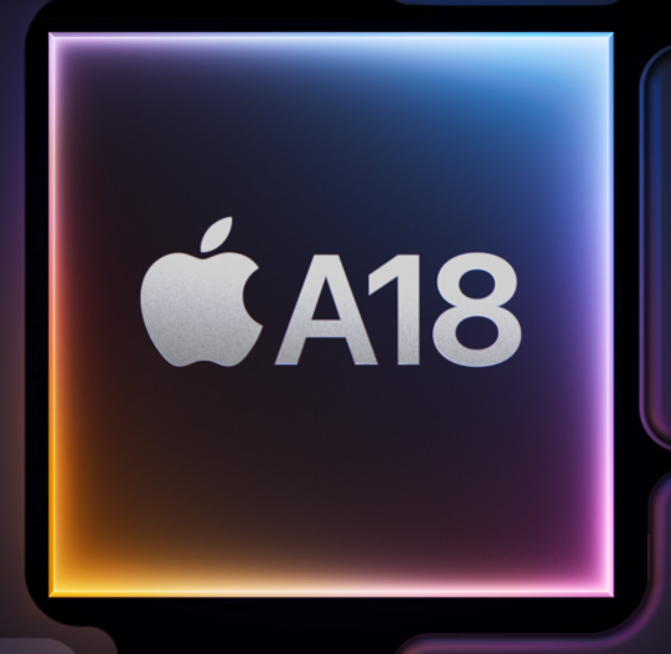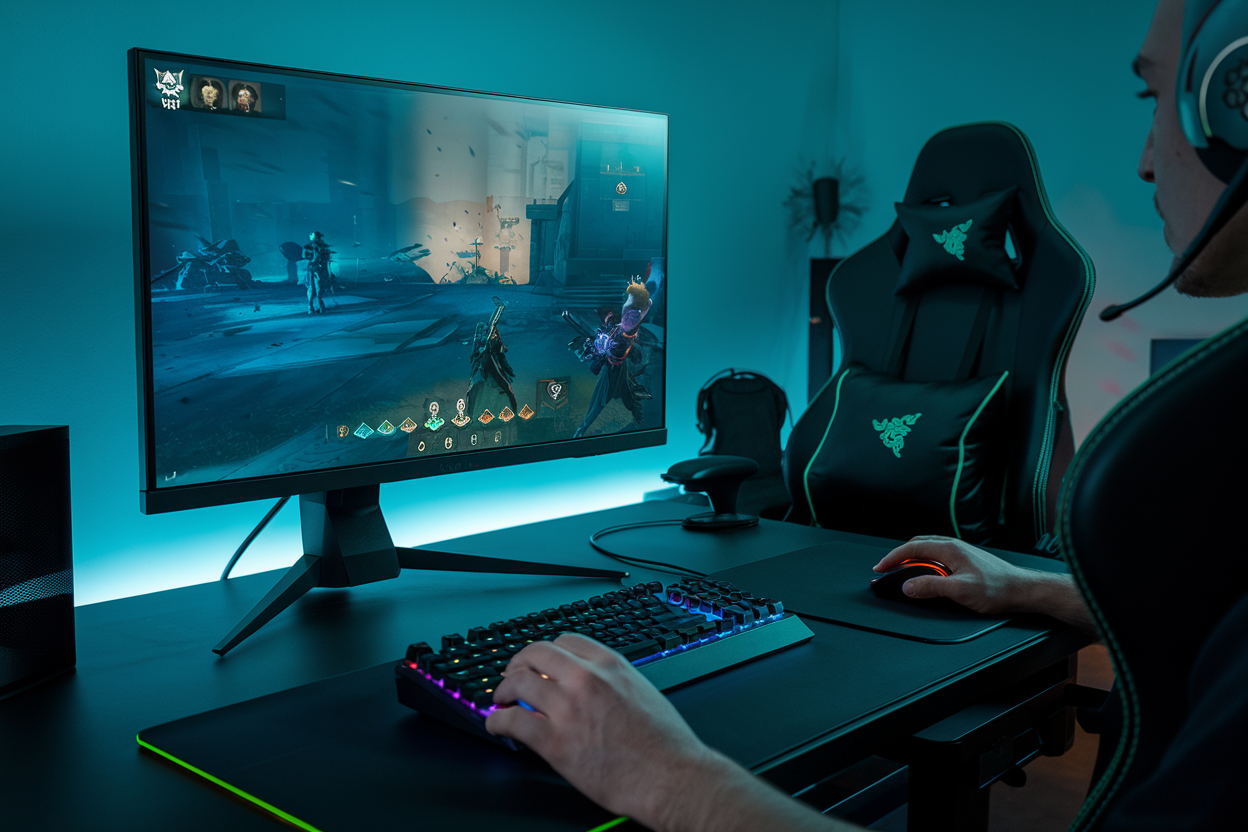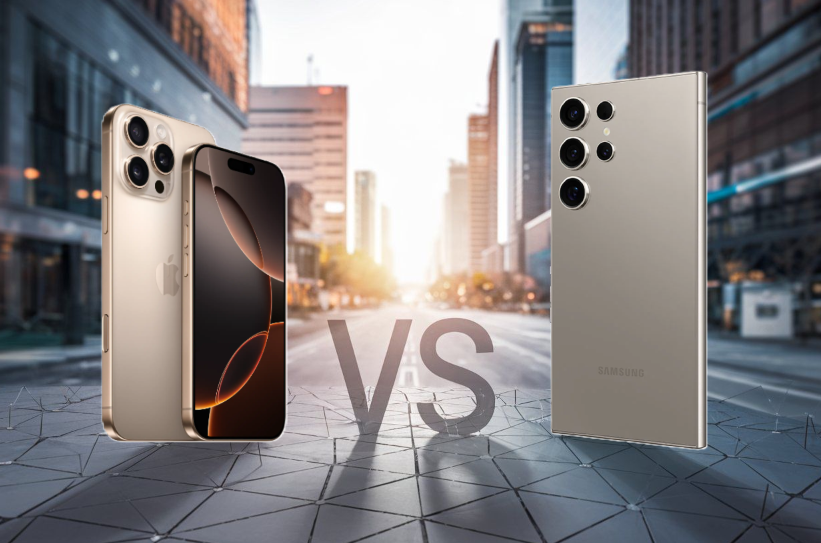Which Smartphone Offers The Best Overall User Experience?
Now we come to the comparison of Pixel 9 Pro XL vs iPhone 16.When it comes to the best overall user experience, the iPhone 16 is ahead of the Pixel 9 Pro XL. Its smooth software integration, refined design and superior camera performance make it the ideal choice for most users. That being said, the Pixel 9 Pro XL still holds its ground with great features, especially for those who like Android’s flexibility and customization. It’s a strong contender, but the iPhone 16’s seamless ecosystem and polished user interface give it a slight edge in terms of overall satisfaction.
Pixel 9 Pro XL and iPhone 16 in brief
The Pixel 9 Pro XL and the iPhone 16 are two of the most advanced flagship smartphones available today. Both are packed with the latest technology, offering top-level performance, high-quality displays and powerful cameras. These devices represent the pinnacle of Google and Apple’s offerings
This is Google’s top-tier phone, known for its exceptional software features like AI-powered photography and its deep integration with Google services. It runs on Android 14 and features Google’s custom Tensor G4 chip.

Apple’s latest flagship continues its trend of excellence with the A18 Bionic chip, running iOS 17. It boasts of a premium design, stellar camera capabilities and seamless connectivity with other Apple devices.
Both phones are must-haves for techies and power users, but they excel in different areas. The aim of this comparison is to help the readers understand which of these devices provides the best user experience based on their needs.
A number of factors shape the user experience on a smartphone and are crucial to making an informed choice. Here are the main factors we will focus on throughout the comparison:
- Performance: How fast and responsive phones are with multitasking and running heavy apps or games.
- Design: The look and feel of the device, including materials used and how comfortable it is to hold and use.
- Display: Screen quality, brightness, refresh rate and overall visual experience while using apps, watching videos or gaming.
- Cameras: How well cameras perform in a variety of situations, from everyday shots to professional-level photography.
- Battery life: How long the phone lasts on a single charge and how quickly it can be recharged.
- Software integration: The overall ease of use, including how well the phone’s software and hardware work together and how it connects to other devices or services.
By focusing on these areas, we can get a clear idea of how the Pixel 9 Pro XL and iPhone 16 perform in real-world usage and which one ultimately provides the best user experience for tech enthusiasts.
Design and Build Quality: Pixel 9 Pro XL vs iPhone 16
When it comes to design and build quality, the iPhone 16 stands out with its premium materials and sleek refinement, offering a slightly more luxurious and polished feel compared to the Pixel 9 Pro XL.However, Pixel 9 Pro XL’s minimal design and thoughtful ergonomics make it a strong contender for users who appreciate a clean, modern aesthetic.
Pixel 9 Pro XL: Minimalist design and feel
The Pixel 9 Pro XL continues Google’s tradition of a minimalist design approach. It features a smooth, matte back finish, giving it a simple yet elegant look. Google focuses on creating a device that feels uncluttered, with minimal branding and a clean layout The edges are rounded, ensuring a comfortable grip and the overall hand feel is light yet firm.
- Materials Used: Pixel 9 Pro XL is made from high-quality materials, including a mix of metal and matte glass, which contributes to its durability without feeling too heavy.
- Ergonomics: Google’s design choices focus on functionality. The device has a gentle curve that makes it easy to hold for long periods of time, and the fingerprint sensor is placed for natural, easy access.
- Aesthetics: Google’s color choices are subtle, aiming for a more minimalist look than its competitors. It appeals to users who prefer a more professional, no-frills design.
iPhone 16: Premium glass and metal build

The iPhone 16 takes a different approach, demonstrating Apple’s commitment to luxury and craftsmanship. It has a glass back and an aerospace-grade aluminum frame, which gives it a more premium, glossy finish. Apple’s design is polished, with attention to every little detail, making the phone feel more luxurious in the hand.
- Materials Used: iPhone 16’s use of premium glass and metal enhances the phone’s durability and also adds to its sleek aesthetics. The materials contribute to a somewhat heavy feel, but one that is synonymous with high-end devices.
- Ergonomics: Apple has perfected its design over the years, ensuring that the phone fits comfortably in the hand. The flat edges provide a modern look, but can sometimes feel sharp during prolonged use.
- Aesthetics: iPhone 16’s refined design offers a polished, glossy finish that catches the eye. Its color options are bold yet elegant, appealing to those who like to distinguish their phone as a status symbol.
Ease of Use and Ergonomics
Both phones are designed with ergonomics in mind, but their focus is slightly different. The Pixel 9 Pro XL is built for users who value comfort and practicality, with its curved design and lightweight feel making it easy to handle. On the other hand, the iPhone 16, with its flat edges and premium materials, feels luxurious but can be less comfortable to hold over time due to its heavier build.
In short, if you prioritize luxury and premium finish, the iPhone 16 is the clear winner. However, if you value a minimalistic and ergonomic design that feels comfortable in the hand, the Pixel 9 Pro XL offers a great user experience.
Camera Capabilities: Pixel 9 Pro XL vs iPhone 16
In terms of camera capabilities, the Pixel 9 Pro XL is a strong choice for users who prioritize computational photography and low-light performance, thanks to Google’s powerful AI-powered camera system. On the other hand, the iPhone 16 shines in video recording with its advanced ProRAW format, cinematic mode and superior image processing. If your focus is on taking great photos in challenging conditions, the Pixel 9 Pro XL might be the one for you, while the iPhone 16 is for those who want high-level video capabilities and detailed image controls.
Pixel 9 Pro XL: Computational photography, AI improvements, low-light performance

- Computational photography: Pixel 9 Pro XL uses advanced AI and machine learning to process photos, making even average shots look professional. Google’s software enhances detail, sharpens images and automatically adjusts colors, giving photos a balanced, natural look.
- AI enhancements: Google’s AI not only enhances photo quality but also enables features like Magic Eraser, which lets you remove unwanted objects from photos with just a tap. It is designed to make everyday photography seamless and powerful for casual users.
- Low-light performance: The Pixel 9 Pro XL excels at low-light photography, thanks to its Night Sight mode. This feature brightens dark scenes without adding noise, preserving detail and color, making it ideal for night or indoor shots.
iPhone 16: ProRAW, video capabilities, cinematic mode, and image processing

- ProRAW: iPhone 16 allows users to shoot in ProRAW format, which gives them more control over editing. ProRAW captures all the data in a photo, giving professional photographers or enthusiasts more flexibility in post-production for adjustments like exposure, color balance and sharpness.
- Video Capability: When it comes to video, the iPhone 16 is unmatched. It supports 4K video recording at higher frame rates and introduces improved stabilization, making handheld videos look smoother. This is for content creators who prioritize video quality
- Cinematic Mode: iPhone 16’s Cinematic Mode adds an immersive touch by automatically adjusting focus between subjects to mimic the depth-of-field effects seen in professional films. This feature is perfect for vloggers or those who like to capture artistic, dynamic videos.
- Image Processing: Apple’s A18 Bionic chip offers fast and intelligent image processing capabilities. This ensures better HDR (high dynamic range) in photos, improved skin tones and more balanced lighting, making it particularly effective in portrait shots.
Comparing portrait mode, night mode and overall camera experience

- Portrait mode: Both phones offer excellent portrait mode, but their approach is slightly different. The Pixel 9 Pro XL uses AI to enhance detail and create a soft, natural-looking bokeh (background blur). The iPhone 16’s portrait mode allows for more customization, giving users control over the level of background blur and lighting effects, making it great for those who want more creative input.
- Night Mode: Pixel 9 Pro XL leads the way in low-light photography with its Night Sight Mode, which captures clear, bright images even in extreme darkness. The iPhone 16’s night mode is also strong, but it doesn’t brighten up scenes as dramatically as Google’s solution.
- Overall camera experience: The Pixel 9 Pro XL makes photography easy for users by using AI to automatically enhance photos, making it a great choice for those who want great photos with minimal effort. iPhone 16 offers greater control and brightness in video recording, making it perfect for creators who need versatility in both photos and videos.
In summary, the Pixel 9 Pro XL is ideal for photography-focused users, especially in low-light conditions, while the iPhone 16 is perfect for those who want top-level video capabilities and more control over their photography experience.
Display Quality and Experience: Pixel 9 Pro XL vs iPhone 16
Both the Pixel 9 Pro XL and the iPhone 16 offer top-tier display quality, but they cater to slightly different preferences. If you value a higher refresh rate and an immersive screen, the Pixel 9 Pro XL might feel more fluid. However, if accurate color reproduction and brightness are your priority, the iPhone 16 might be a better choice.

1. Screen size and display technology
Pixel 9 Pro XL: The Pixel 9 Pro XL comes with a large 6.7-inch OLED display, which delivers deep blacks and vibrant colors. OLED technology is known for its ability to close individual pixels, which produces excellent contrast, especially when viewing content with dark scenes.
iPhone 16: The iPhone 16, on the other hand, uses Super Retina XDR, which is Apple’s version of OLED. While it also offers deep blacks and vibrant colors, Apple focuses heavily on color accuracy and brightness, which makes the display more vibrant and crisp.
2. Refresh rate
Pixel 9 Pro XL: It supports a 120Hz refresh rate, which makes scrolling, animations and gaming incredibly smooth. The higher refresh rate means the screen updates up to 120 times per second, giving a noticeable fluidity, especially for gamers or those who use their phone for fast-paced activities.
iPhone 16: Similarly, the iPhone 16 supports a 120Hz display, but it dynamically adjusts the refresh rate depending on what you’re doing. This means it ramps up to 120Hz for things like scrolling or gaming, and reduces static images or reading rates to save battery. It provides a smooth experience while optimizing battery life.
3. Color accuracy and brightness
Pixel 9 Pro XL: While the Pixel’s colors are vibrant, it’s tuned more for high contrast and punchy visuals, which are great for watching videos or playing games that require more dramatic visual effects. However, its brightness level, while adequate, is not as high as that of the iPhone.
iPhone 16: Apple’s Super Retina XDR display is designed with color accuracy in mind. The iPhone 16 excels at displaying true-to-life colors, which is important for tasks like photo editing or watching movies where natural color reproduction is important. Additionally, the iPhone 16’s display can reach higher brightness levels, making it easier to use outdoors or in bright light conditions.

4. Real-world experience: streaming, gaming and browsing
Pixel 9 Pro XL: The Pixel 9 Pro XL’s high refresh rate and vivid OLED display make it ideal for video streaming, gaming and browsing. The visuals are sharp, and the immersive screen allows users to get lost in their content Gamers will especially appreciate the smoothness while playing fast-paced games, and streaming video feels dynamic with deep blacks and vivid colors.
iPhone 16: The iPhone 16’s display shines when it comes to clarity and brightness. Viewing content on the iPhone feels natural, with colors looking true to life. This is a great option for those who care about accurate color representation and maximum brightness. When browsing, the display feels smooth, and the dynamic refresh rate makes scrolling and transitions feel fluid, all while saving on battery.
Final Thoughts: Both the Pixel 9 Pro XL and the iPhone 16 offer incredible display quality, but the choice comes down to what you prioritize. Pixel 9 Pro XL’s vibrant OLED with high refresh rate is perfect for those who prefer an immersive, smooth experience, especially for gaming and videos. Meanwhile, the iPhone 16 offers stunning color accuracy and superior brightness, making it ideal for users who want the most true-to-life visuals, especially in varying lighting conditions.
Performance and Speed: Pixel 9 Pro XL vs iPhone 16
iPhone 16’s A18 Bionic processor offers superior performance and speed compared to Pixel 9 Pro XL’s Tensor G4. Whether it’s for gaming, multitasking or app responsiveness, the iPhone 16 delivers a more fluid and faster experience in everyday work.
A18 Bionic vs Tensor G4: Which processor reigns supreme?
iPhone 16’s A18 Bionic chip delivers unmatched performance with its 3nm architecture, delivering incredible speed and power efficiency. In contrast, the Tensor G4 in the Pixel 9 Pro XL is optimized for AI tasks and computational photography but falls short in raw power compared to the A18.

App loading and multitasking
Whether gaming or multitasking, the iPhone 16 consistently loads apps quickly. While the Pixel 9 Pro XL handles day-to-day tasks well, it can lag with resource-heavy apps. The A18 Bionic makes switching between apps smooth, while the Tensor G4 can feel sluggish under heavy multitasking.
Gaming and performance
For gamers, the A18 Bionic offers higher frame rates and smoother gameplay, especially in 3D games. The Tensor G4 handles casual gaming but can’t match the A18’s graphic fidelity and stability during long sessions.

Benchmark results and real-world usage
Benchmark tests like Geekbench show that the A18 Bionic outperforms the Tensor G4 across the board. While the Tensor G4 excels at AI-related tasks, the A18 is superior in overall performance, ensuring smooth app usage and less lag in day-to-day activities.
If you’re after top-tier speed, multitasking and gaming performance, the iPhone 16 with the A18 Bionic chip is the clear choice over the Pixel 9 Pro XL’s Tensor G4.
Price and value for money: Pixel 9 Pro XL vs iPhone 16
The iPhone 16 costs more than the Pixel 9 Pro XL, but the question is whether the extra cost significantly improves the user experience. While both phones offer excellent performance and features, the higher price of the iPhone 16 reflects Apple’s premium ecosystem, superior build quality and longer software support. However, the Pixel 9 Pro XL offers great value for the price, especially for users who are heavily invested in Google’s ecosystem or who prefer Android.
Pixel 9 Pro XL: Starting at a low price, this is an affordable option for those looking for flagship features without the premium price.
iPhone 16: Starts at a higher price, with additional costs for higher storage options, reflecting Apple’s focus on design, performance, and ecosystem integration.
Value for money
Pixel 9 Pro XL: Offers powerful performance with Tensor G4 chip, top-tier camera and a clean Android experience. It is ideal for Android users who want flagship-level specs at a lower cost.
iPhone 16: The A18 bionic chip, superior build quality and long-term software updates justify its high price. It’s especially valuable for users within the Apple ecosystem, offering seamless integration with MacBooks, Apple Watches and more.
Is the extra cost worth it?
iPhone 16: If you rely on Apple’s ecosystem, the higher cost of the iPhone 16 is worth the seamless integration, strong security features and long-term software support.
Pixel 9 Pro XL: For Android lovers, it offers comparable everyday performance and high-quality photography at a low price, making it a smart choice for budget-conscious buyers.
Final thoughts: The iPhone 16’s higher price offers a premium, Apple-centric experience, while the Pixel 9 Pro XL offers excellent value for those looking for Android flexibility without paying a premium.
When comparing Pixel 9 Pro XL and iPhone 16, both smartphones shine, but the best choice depends on your needs.
iPhone 16
Power: The A18 Bionic chip provides the best performance, while iOS 17 ensures a smooth user experience. Apple’s long-term support and design focus make it a reliable option.
Ideal for: Casual users and gamers seeking high performance and security.
Pixel 9 Pro XL
Strengths: Outstanding camera capabilities with advanced AI features, perfect for photography enthusiasts. Android 14 offers extensive customization options.
Ideal for: Users who prioritize camera performance and personalization.
Quick Recommendations:
For Photography: The Pixel 9 Pro XL excels with low-light performance and AI enhancements. The iPhone 16 is great for ProRAW and video, but the Pixel is handy for quick shots.
For Gaming: iPhone 16 offers superior performance and thermal management. The Pixel 9 Pro XL can handle games but can’t match the power of the A18.
For Simplicity: The iPhone 16 offers a sleek interface and excellent battery life. The Pixel 9 Pro XL allows for more customization with widgets.
Choose iPhone 16 for a premium experience with reliable updates.
Choose Pixel 9 Pro XL for better camera quality and customization.
Ultimately, both smartphones are great—choose based on how you use your device every day.



























